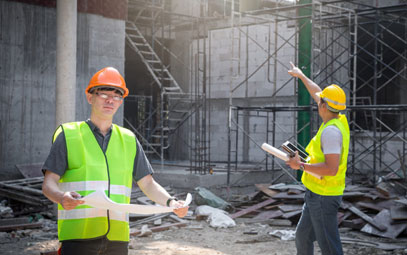In the State of Wisconsin, prior to a project being able to be issued permit a Plan Review is required.
This is true throughout the country regardless of jurisdiction or which state you are building in. However, in our state of Wisconsin this plan review is best known as “State Review” or “State Plan Review”. This is because the state for generations have been the only ones doing this review for almost all communities statewide.
Why? Why the state and not the local communities?
Most all of us have received such extensive training to reinforce that when it comes to commercial structures that before permit can be issued, the State has to review them. But often time that training stops short of saying that your community can do it too. And almost no inspector that we have encountered thus far is aware that this same authority to do plan reviews at the local level is often coupled the authority for Inspectors to also do their job. This provision is SPS 361 as well as state statutes.
There are various thresholds in place. If a community has any delegation at all, the most common two are:
- Certified for Inspections only (your community is responsible for the inspections of structures in your municipality) -> SPS 361.60(1)
- Certified for Inspections and Small-Scale Plan Reviews for structures under 50,000 cubic feet -> SPS 361.60(5)(c)
And that is where most communities stop. Even though the average building is significantly larger than that threshold.
To gain a better understanding That 50,000 cubic foot threshold is a volume threshold. A building that is roughly 60’ long x 60’ wide x 14’ tall would be 50,400 cubic feet – roughly the size of a free-standing Starbucks. This structure would be too large for a Certified Community to do – so without expanded plan review delegation – it would need to go back to the state.
You also might be asking, where does that 50,000 cubic foot volume threshold even come from?! Especially as everything that we do is based off square feet for permits. That size volume is also the same size threshold that triggers another requirement in our state statutes – it’s the point where an architect or engineer to prepare, sign and seal the plans. Decades ago, when this was established, it was debated and ultimately decided that it would be best that for any community seeking to hold an architect or engineer accountable for their designs – would be another architect or engineer. So unless that community had their own on staff or under contract to do such reviews, it would default back to the state of Wisconsin.
Hence – State Plan Reviews. And that is where E-Plan Exam Comes in!
We are staffed by numerous individuals, but our two founders are Licensed Engineers who oversee all plan review operations. Most of the staff we have come from engineering schooling backgrounds as well and have extensive code knowledge. This allows us to apply with communities to get to the next levels of unlimited size plan review delegation:
- Cities of Second Class (and first class) can do plan reviews and inspections of unlimited size -> SPS 361.60(5)(b) & (a).
- ANY municipality delegated as an appointed agent can request plan reviews and inspections of unlimited size if they have on staff or under contract an Architect or Engineer registered in the State of Wisconsin and with Proper inspection/plan review credentials. -> Wis. Stat 101.12(3g)
As of today – there is only one city of first class and 16 cities of second class. So, of the 1,800 other municipalities that would want to pursue this expanded plan review, appointed agent would be the route to pursue.
Of course, there are other requirements in play beyond the need for an architect or engineer, and there is still an element of choice where the designer can still submit to the state in all of this even after delegation. All of these rules and requirements we will be more than happy to go through with you, but this is the foundational element on which the state operates. And this is what we through E-Plan Exam as well as in our own lives before we founded this company have operated on to help multitudes of communities achieve this status.
Fundamentally, this delegation once achieved empowers each community to take control of all aspects of development within their own community.
This is how plan review has been handled in our state for decades. And it is why you see the interesting side effects of it.
Consider the following examples all taken at the time of this writing –
The City of Sturgeon Bay, a city of over 8,000 population has the capabilities today that if a high rise were to be developed within the city, all Building, HVAC, Plumbing, Fire Alarm and Fire Sprinkler could be done at the local level.
Compare that to a city like Racine with over 77,000 population, the fifth largest city in the state where only the Plumbing can be done for that same structure. Or a city like La Crosse with over 50,000 population where all those elements would have to go to the state for plan review as they today are the only ones who can do it in that community.




